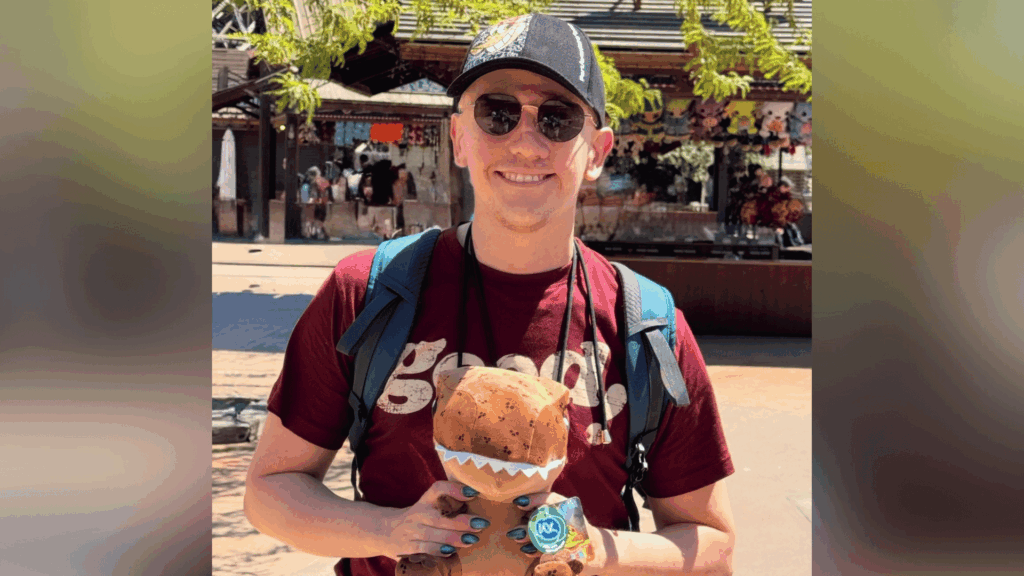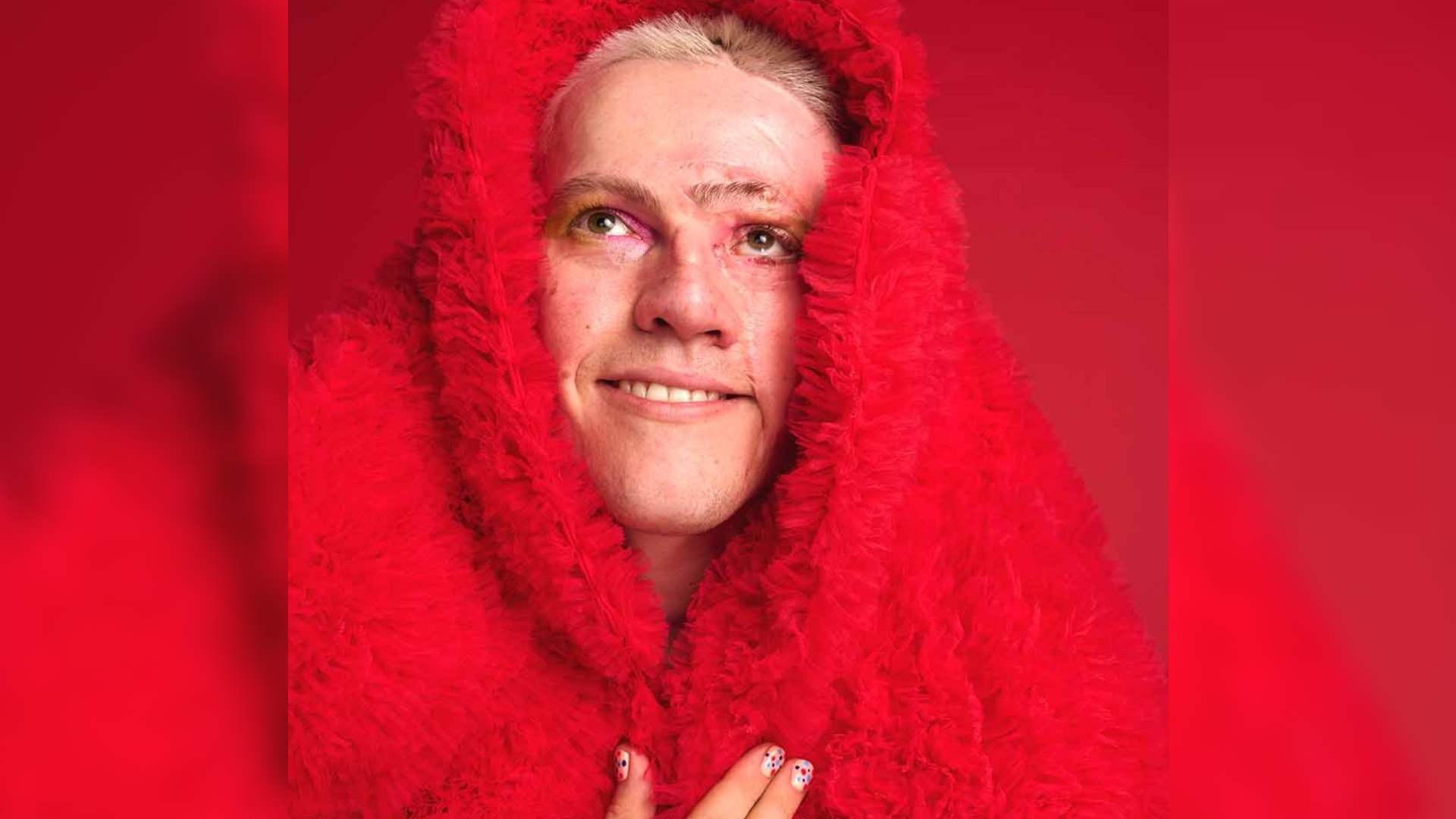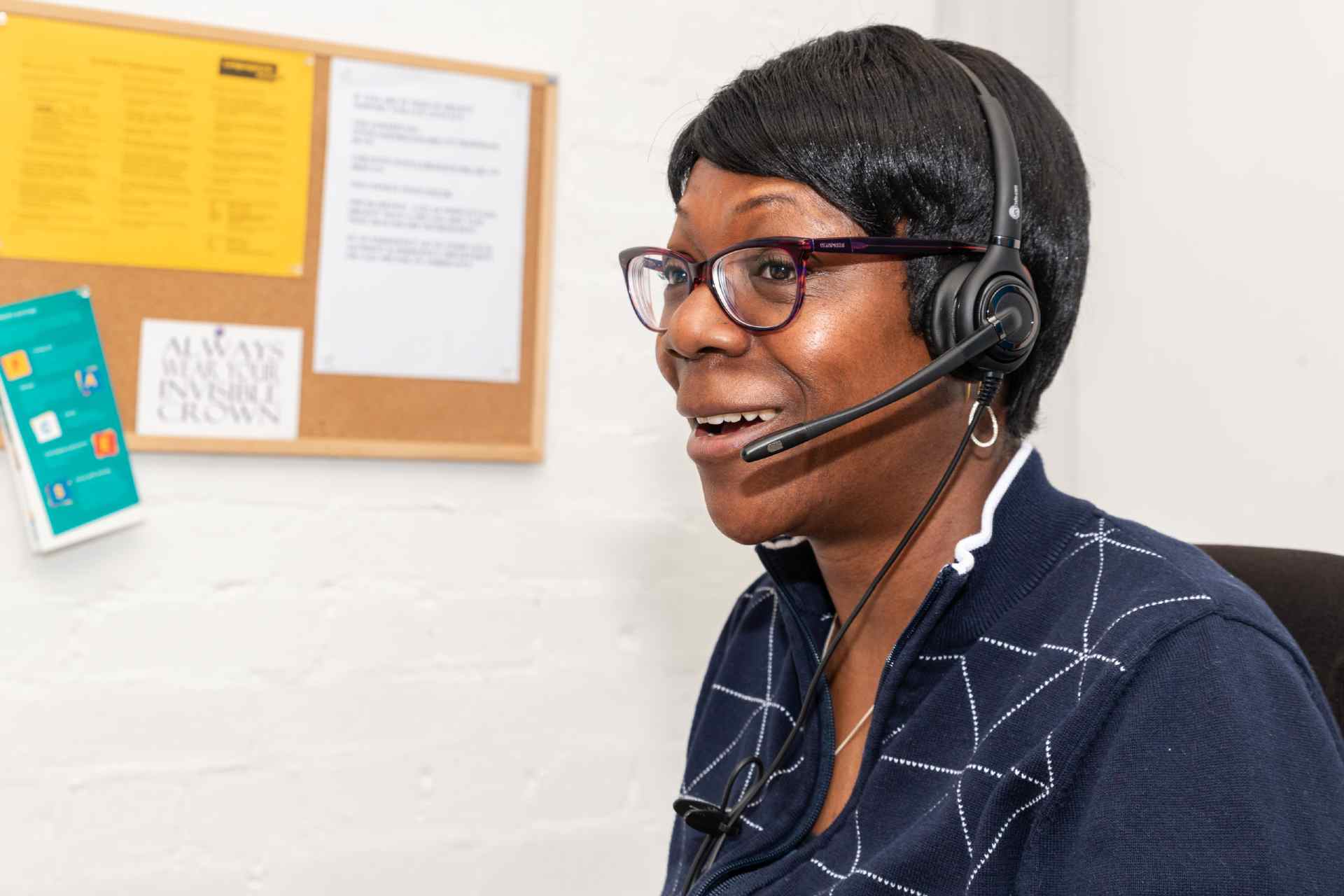My name is Rob – I’m an actor, visibly different and 100% queer!
I was born with a rare birthmark called a Congenital Melanocytic Nevis (CMN) on my face. It stretched over my left cheek and up into my hairline. My parents were informed that there was a high chance it may turn malignant, so I began surgeries to have it removed from a young age. I’ve now had around 48 operations on my face, including skin grafts and tissue expansion, which has left me with scarring.
The first time I remember feeling different was when I was around seven years old and I moved to a new town and school. Being the new kid is always tough and when you have a visible difference it can be even tougher.
I am really starting to feel calm, collected and full of love for myself.
It was the first time in my life that I really noticed people staring and began to have to explain the way that I looked. I wasn’t prepared for this, as at my old school people had grown up with me, and my scars were just the norm. I remember asking my parents about how I should cope with this and them telling me to be truthful. They said it was okay for people to be curious if they were polite about it, and they also taught me to combat a stare with this phrase: “Would you like to know what happened?” – something I still use to this day if the staring feels too intrusive. It allows me to humanise myself in the situation and makes the person staring think about their actions.
Thankfully, after dealing with the school switchover and some initial teasing, I was lucky to fit right in and enjoy my new school and make friends.
Then, when I was in secondary school, I realised that I was attracted to men and not women, which was a very confusing time for me. I felt upset and resentful towards the universe for making me even more different and for giving me what at first felt like another problem.

Rob has learnt to love every aspect of himself
I didn’t come out at school as I was mindful of the fact that I had managed to get people on side enough to not tease me too much about my face and knew that if I did come out, it would give the bullies a lot more fuel to their fire.
This isn’t something I regret at all, as I hadn’t learnt to love my visibly different self and I wasn’t mature enough to be self-accepting of my queerness. In all honesty, I hadn’t been exposed to many queer people in the same way that I hadn’t felt represented as a person with a visible difference. In hindsight, I appreciate my decision to tackle these aspects of myself one by one. Being an LGBTQIA+ person with a visible difference can be challenging.
A lot of inner work had to happen to get me to where I am today and I didn’t do it alone. Throughout my life, I have been able to gather an amazing support network of different folks from all walks of life who I am grateful to be able to lean on when I need to. I have also been in counselling for most of my adult life which has really helped me to be able to pick apart any twisted views that I may have about myself and the world that have been created by my circumstances. Talking aloud can really help to alleviate self-negativity.
I am by no means perfect, and I absolutely still have days that can be a struggle, but I have made immense progress and am really starting to feel calm, collected and full of love for myself.
Below are five things that have helped me on my journey, and I hope they might help you too!
Don’t hide your difference from others, especially on dating apps!
When I downloaded my first dating app, my profile picture was edited in such a way that the exposure was high, and you couldn’t clearly make out my scar. I learnt that this was not the way forward the hard way, after a guy I met up with for a date reacted in an aggressive and hurtful way. He had no right to do this of course and it knocked my confidence for a long time, but after a lot of self-work it also gave me the courage and clarity to present myself to the gay world in all of my visibly different glory.
Nine times out of 10, honesty was the best policy, and I met people who liked me regardless of my scarring. I now have a wonderful partner of three years who I met through a dating app.
Deal with your Visible Difference and Queerness as two separate entities
You can’t do everything all at once. Trying to deal with all of your worries in one go is like trying to give up sugar, caffeine AND crisps. Sure, you know in the long run that you will feel better, but the process is not going to be an enjoyable one.
Take things one step at a time and break your worries into smaller segments. Allow yourself the time to focus on each aspect. It may feel like a slow process but every avenue leads upwards towards self-love and acceptance.
Don’t feel like you have to choose a fight – fighting for general human rights is also cool!
When I first started to realise that I had a voice and a platform, I struggled because there were so many things that I felt strongly about and that I wanted to speak up for – my queerness, anti-racism etc. However, I also knew that there isn’t enough awareness around visible difference, and I was worried that if I chose more than one fight, my conversation around difference would be swallowed up.
I soon realised that every human rights argument or conversation quite often feeds into one another and one right cannot exist without the others.
No cause is greater than another, use your voice to fight for what matters to you in that moment!
Don’t focus on what makes you different, focus on what makes you a sparkly individual (often they’re one and the same!)
Instead of telling yourself: “I am different. I am not normal.”, try looking in the mirror and telling yourself “I am beautifully unique, no one else on this planet has what I have!”
Changing those negatives into positives and doing your best to mean it can really make a difference to the way you view yourself and the world.
Remember your visible difference is yours and no one else’s
Sometimes it can feel exhausting to explain or apologise your face away to the rest of the world.
Remember: Your difference, your decision!
You control the narrative around what you divulge and what you don’t. You never owe anyone an explanation and having that control can feel powerful. Next time someone is staring or asking an inappropriate question, remember that you can choose to engage or not.
My final tip is enjoy life and try to find all the things about you that are only for you and relish in those things.
You are wonderful
You are unique
You are truly loved ❤️

